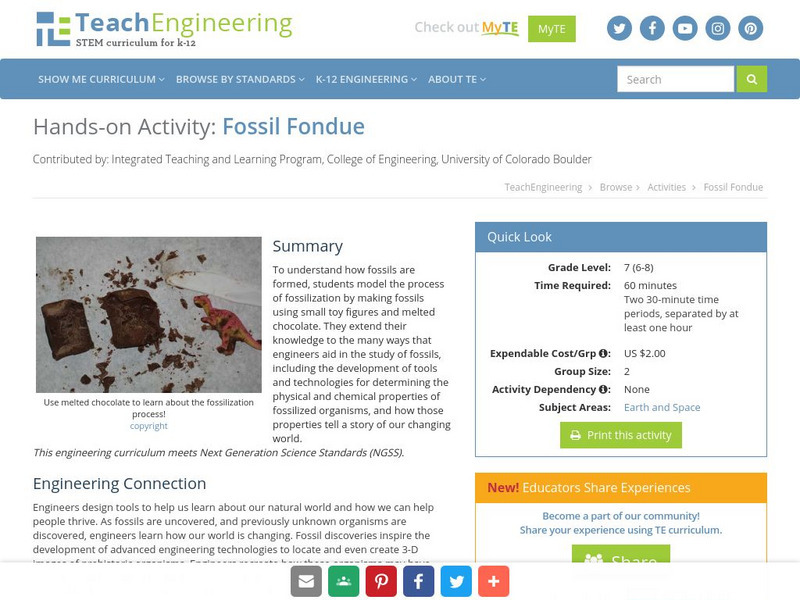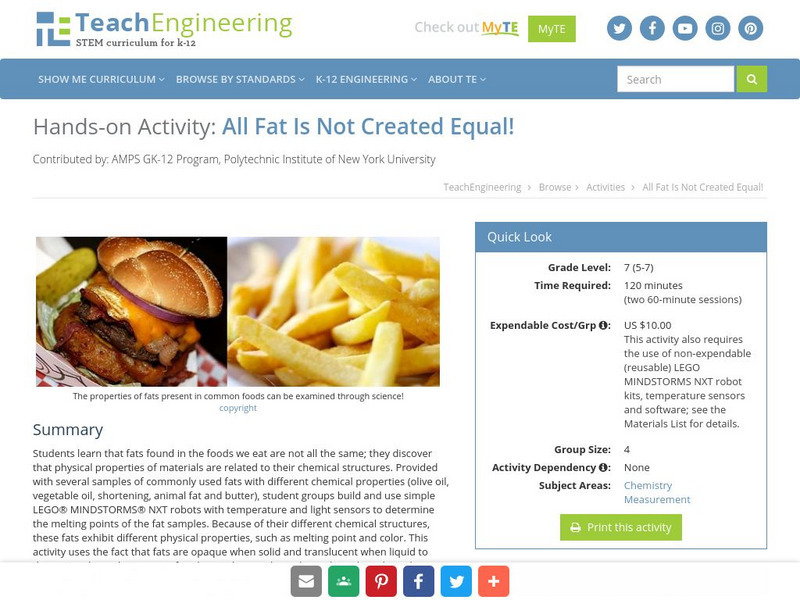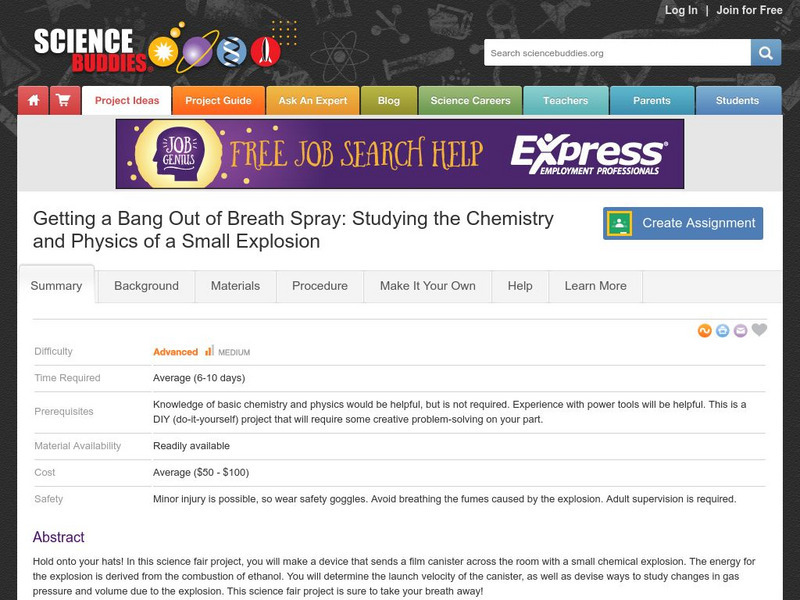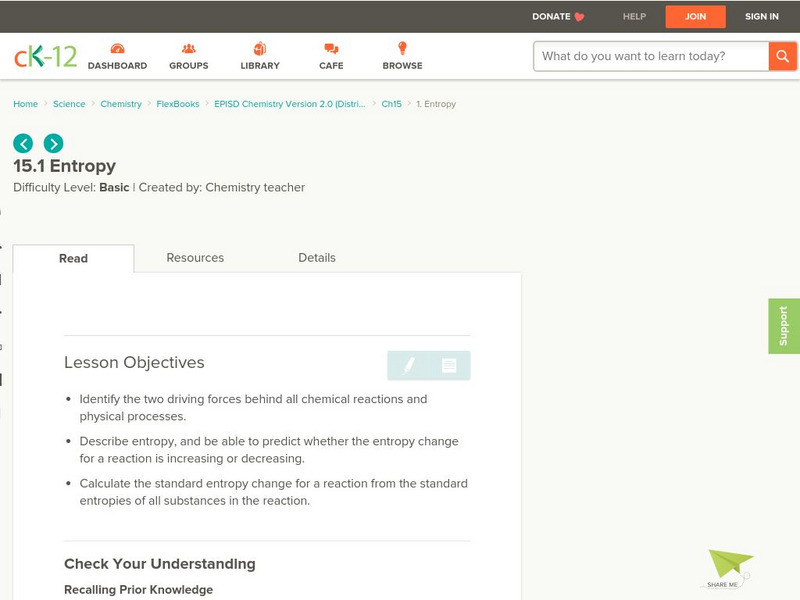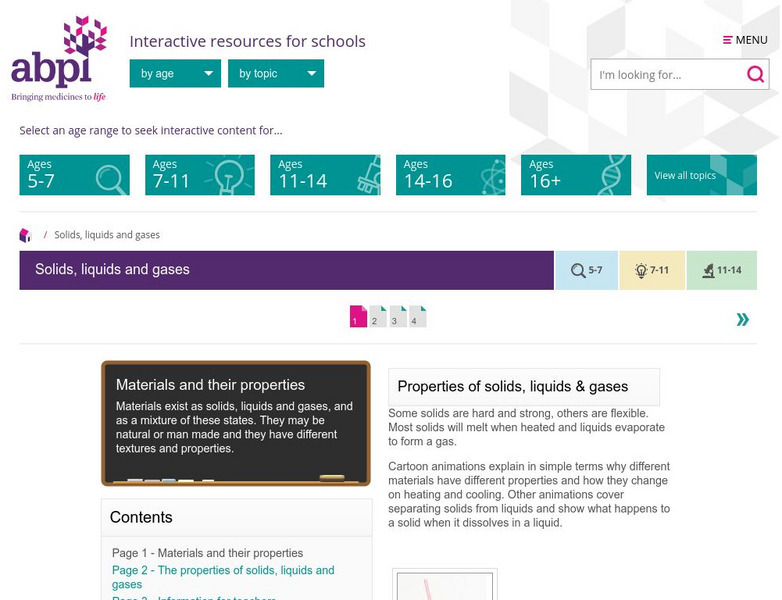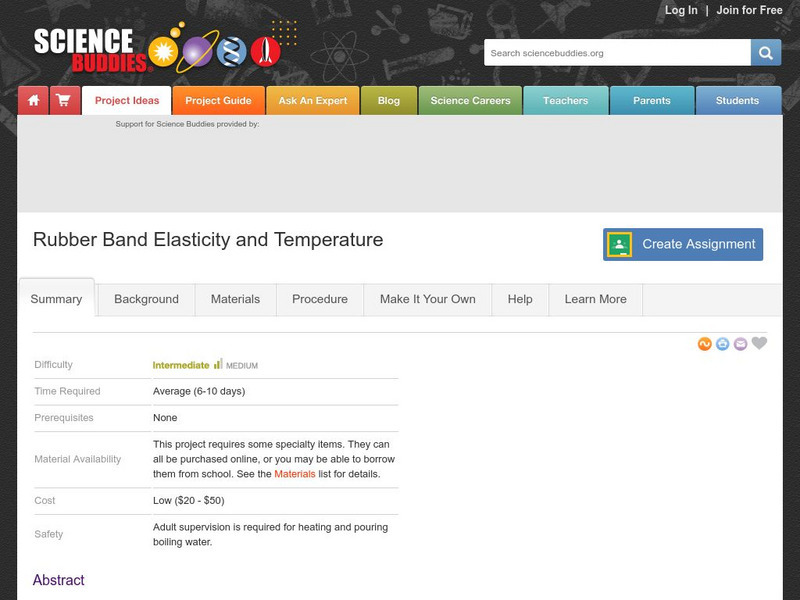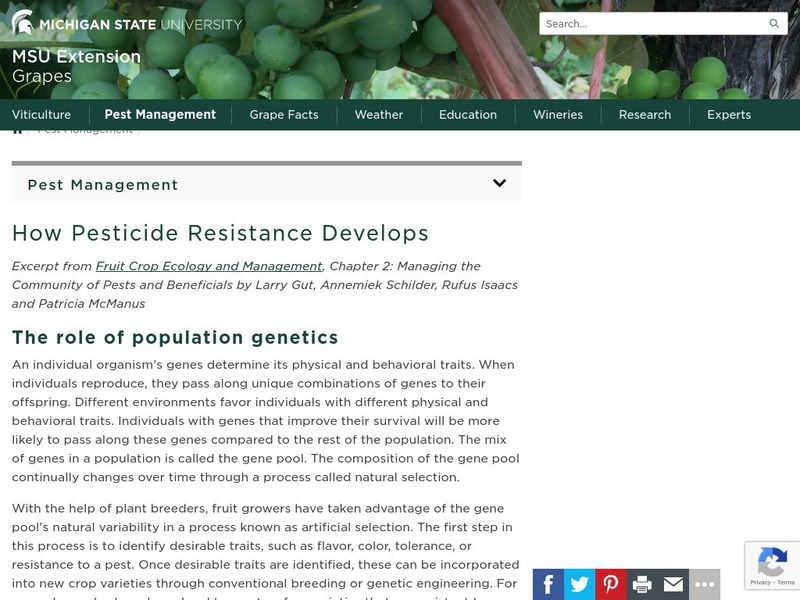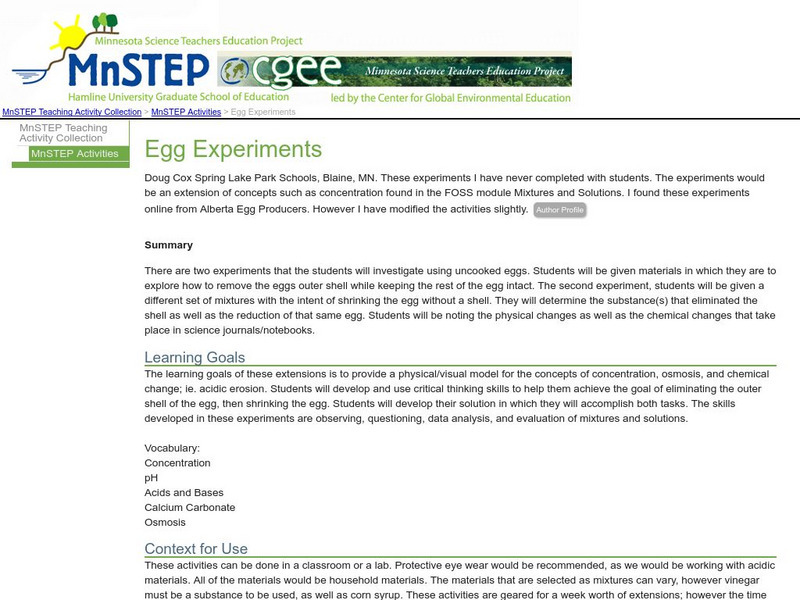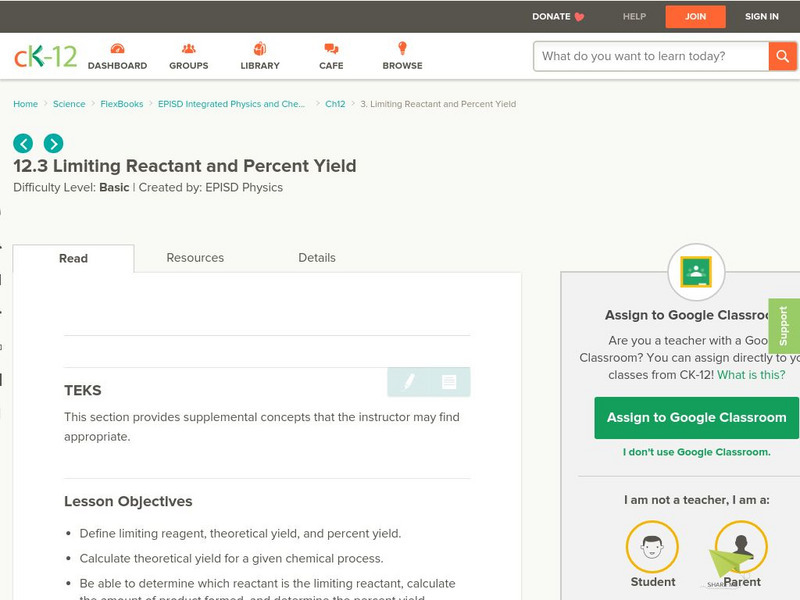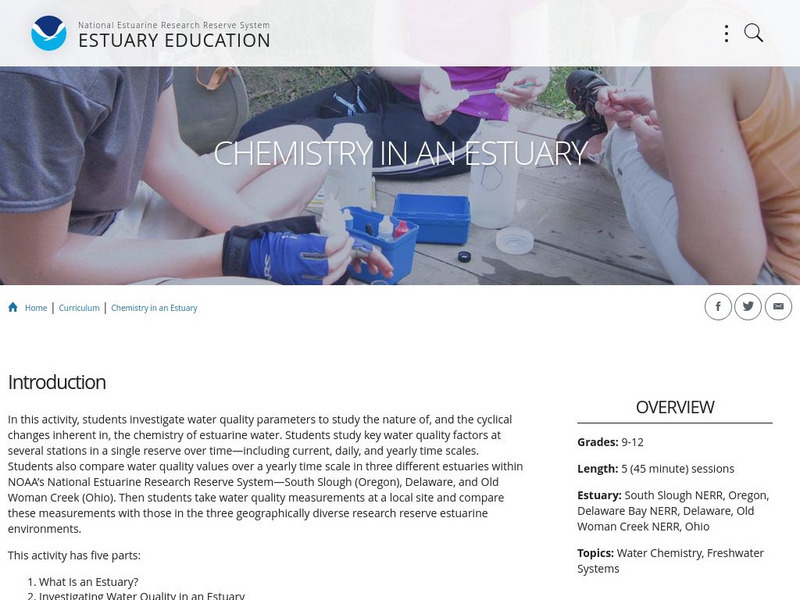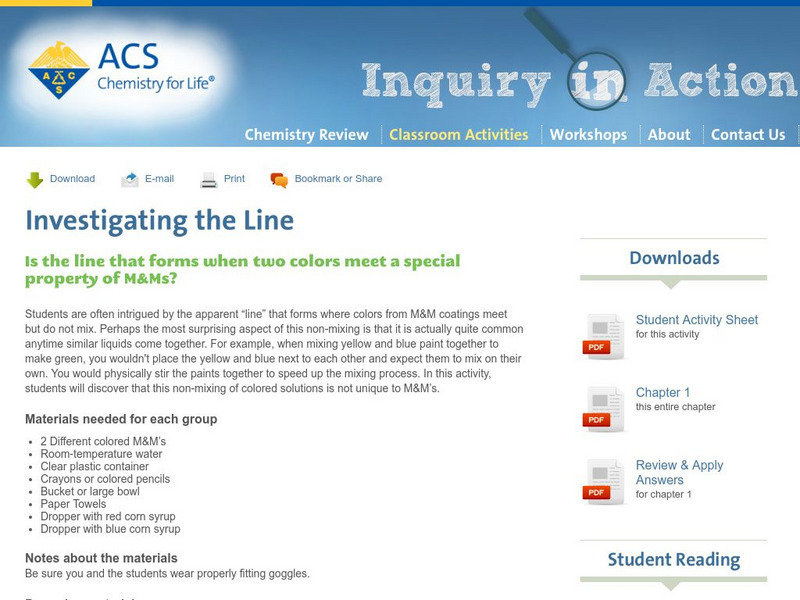Upper Canada District School Board
Tom Stretton's Advanced Placement Chemistry: Liquids and Solids
Take on this self-guided advanced level e-text, and learn about the chemical and physical structure of liquids and solids.
ArtsNow
Arts Now Learning: States of Matter [Pdf]
In this lesson, students will move and generate choreography to understand different states of matter.
Other
The Science House: Combustion
In this experiment, students will observe that the weight of the product of combustion is greater than that of the starting material. Teacher's notes address the key concepts of this experiment.
Center of Science and Industry
Cosi Columbus: A Swell Activity With Beans [Pdf]
Learn about absorption in this hands-on science experiment. Includes full list of materials, procedures, and scientific explanation of what happens to different types of beans as they soak in water in a test vial.
TeachEngineering
Teach Engineering: Fossil Fondue
To understand how fossils are formed, students model the process of fossilization by making fossils using small toy figures and melted chocolate. They extend their knowledge to the many ways that engineers aid in the study of fossils,...
TeachEngineering
Teach Engineering: All Fat Is Not Created Equally!
Students learn that fats found in the foods we eat are not all the same; they discover that physical properties of materials are related to their chemical structures. Provided with several samples of commonly used fats with different...
Science Buddies
Science Buddies: Build a 'Breath Spray Bomb' to Study Small Explosion
Hold onto your hats. In this science fair project, you will make a device that sends a film canister across the room with a small chemical explosion. The energy for the explosion is derived from the combustion of ethanol. You will...
CK-12 Foundation
Ck 12: Entropy
[Free Registration/Login may be required to access all resource tools.] After identifying the two driving forces behind all chemical reactions and physical processes, students investigate entropy, and predict whether the entropy change...
Khan Academy
Khan Academy: Thermodynamics Article
Thermodynamics is a very important branch of both physics and chemistry. It deals with the study of energy, the conversion of energy between different forms and the ability of energy to do work. Through this article, you will begin to...
The Association of the British Pharmaceutical Industry
Abpi: Solids, Liquids, and Gases
Students learn about solids, liquids, and gases in this interactive slide show. Animated cartoon characters explain concepts having to do with properties of matter. A self-checking quiz follows the lesson.
Science Buddies
Science Buddies: Rubber Band Elasticity and Temperature
Many materials expand when heated and contract when cooled. What do you think will happen to the elasticity (stretchiness) of a rubber band when it is heated or cooled to various temperatures?
Khan Academy
Khan Academy: What Conditions Influence Lyophilisation?
The resource from Khan Academy and the Association of American Medical Colleges provides study content for the MCAT. This resource provides practice uestions related to phase changes during lyophilisation, or the process of freeze drying.
Michigan State University
Michigan State University: How Pesticide Resistance Develops
An individual organism's genes determine its physical and behavioral traits. When individuals reproduce, they pass along unique combinations of genes to their offspring. Different environments favor individuals with different physical...
Science Education Resource Center at Carleton College
Serc: Egg Experiments
Two experiments where students investigate with uncooked eggs. In the first investigation, they explore how to remove the eggs outer shell while keeping the rest of the egg intact. In the second, students attempt to shrink the egg...
Maryland Science Center
Maryland Science Center: One Ring to Rule Them All [Pdf]
A simple experiment to create a secret message using invisible ink, in honor of J.R.R. Tolkien's birthday and the Ring in The Lord of the Rings.
The Wonder of Science
The Wonder of Science: 5 Ps1 4: Mixing Substances
Does mixing two or more substances result in new substances? This site contains work samples, phenomena, assessment templates, and videos that contain content to covers mixing substances.
Maryland Science Center
Maryland Science Center: Shrinky Dink Charms [Pdf]
Use recycled plastic to make shrinky dink jewelry and decorations.
Children's Discovery Museum
Children's Discovery Museum of San Jose: Ice Exploration
Provides fun ideas for exploring how to transform ice using shapes, light, and color.
Climate Literacy
Clean: Introduction to Earth's Climate
This lesson is an introduction to Earth's climate and covers key principles regarding Earth's unique climate, atmosphere, and regional and temporal climate differences. Students will gain an understanding of how the weather and climate...
CK-12 Foundation
Ck 12: Limiting Reactant and Percent Yield
[Free Registration/Login may be required to access all resource tools.] Students will compare theoretical yield to actual yield, and then investigate what happens when one reactant runs out before the other reactants are fully consumed....
NOAA
Noaa: Estuaries 101 Curriculum: Chemistry in an Estuary
This activity introduces students to the complex chemistry of estuarine water. Students investigate how chemical and physical water quality factors-pH, temperature, dissolved oxygen, and salinity-change and interact over varying time...
American Chemical Society
Inquiry in Action: Investigating the Line
Students will observe the non-mixing of colored solutions by using M&M's in this lab activity. Lab activity includes both student and teacher instruction sheets.
PBS
Pbs Teachers: About All You Can Eat: Truth or Consequences
Demonstrate how calories are measured by building a calorimeter to measure the transfer of heat energy during a chemical or physical change. Test and record data on the calories in a peanut.
Science Struck
Science Struck: Can Diamonds Be Melted or Dissolved?
While diamonds are extremely hard and strong, they are not indestructible. Learn how diamonds can be burned, melted, or dissolved.


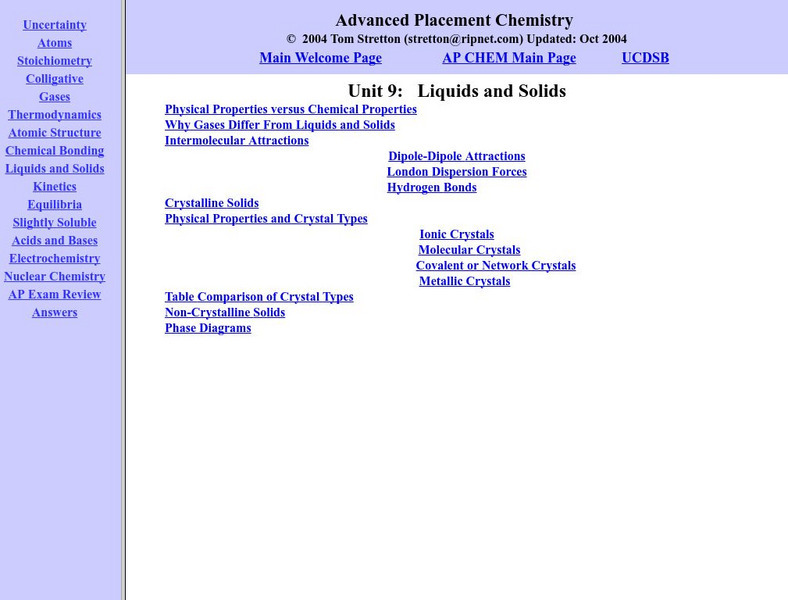
![Arts Now Learning: States of Matter [Pdf] Lesson Plan Arts Now Learning: States of Matter [Pdf] Lesson Plan](https://d15y2dacu3jp90.cloudfront.net/images/attachment_defaults/resource/large/FPO-knovation.png)
